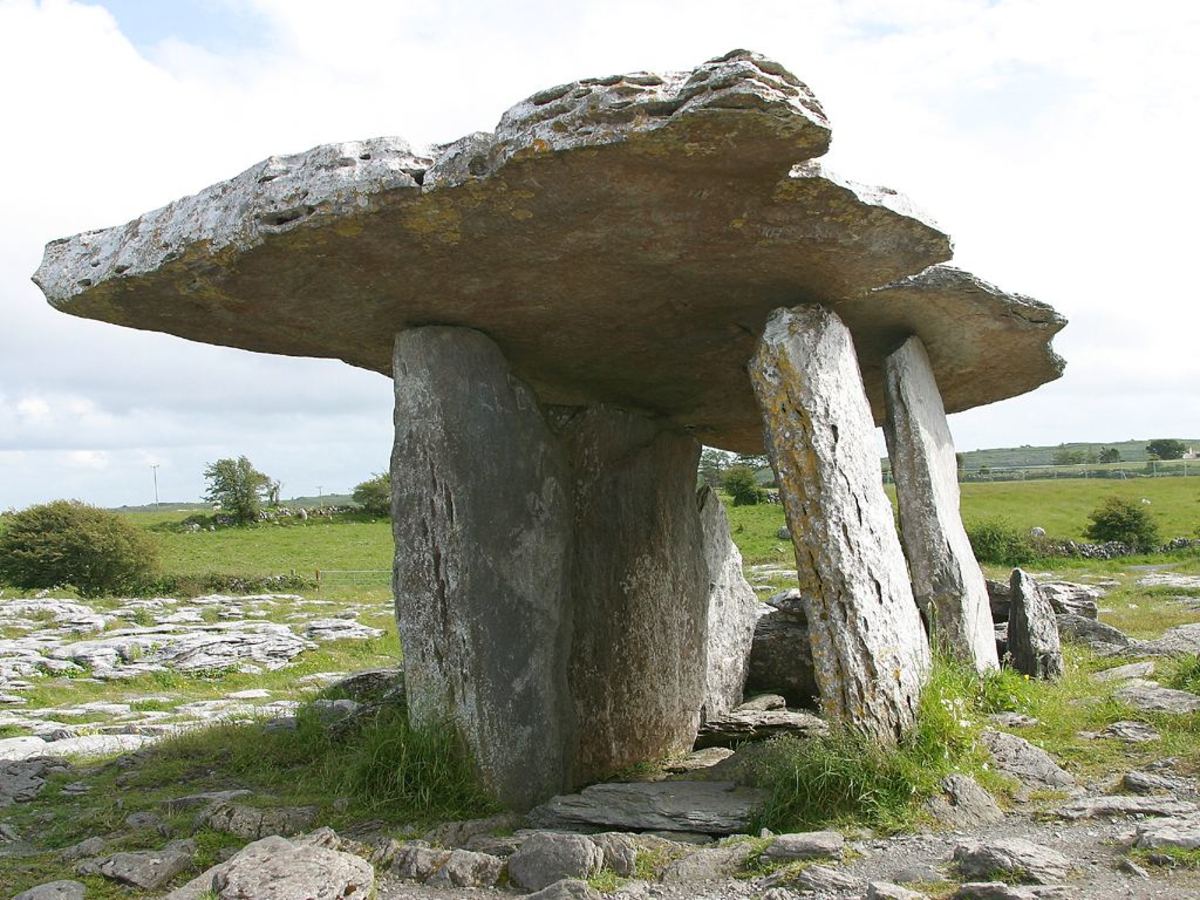Dragons and Dinosaurs
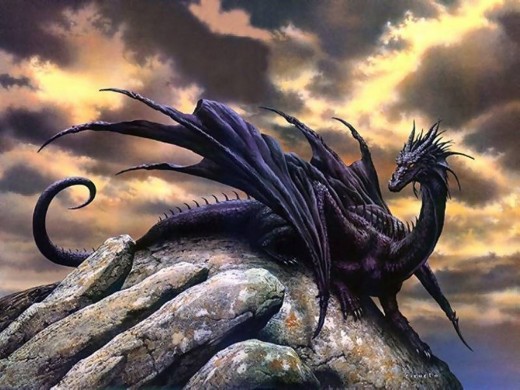
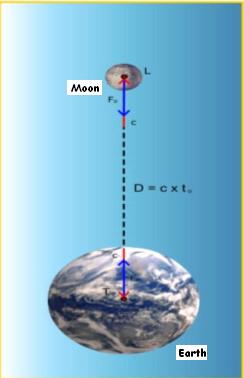


Did They Coexist With Man?
The archeological evidence for the existence of dragons is compelling. Every culture around the world has legends of dragons, beginning with the story of Adam and Eve in the Bible. They are depicted on pottery, tablets, cave paintings, and even cliff drawings; and often they are shown interacting with people. But if they truly existed, shouldn’t we find evidence of them in our fossil records? Could dinosaurs be the basis for the dragon legends, and if so, wouldn’t it require dinosaurs and man to have coexisted not so very long ago? If they’re entirely gone, what wiped them out? The word Dinosaur did not appear in the English language until 1841, introduced by Sir Edward Owens. Before then, they were always referred to as dragons, which is why I’m going to show you that yes, dragons are for real and they may still exist.
Let me begin by assuring you that I have found the answer to the extinction of the Dinosaurs!. This theory makes more sense than the more mundane theories of meteors or lack of oxygen, and unlike the textbooks’ speculation, this theory is based on actual science! Here’s how it goes: Given, the earth’s rotation is about 1000mph at the equator, but it is slowing down about 1/1000 second every day (Astronomy Magazine, June 1992, p. 24;also International Earth Rotation Service). Hence, if the rotation of earth is slowing down, then it used be a faster than it is now. Evolutionism hypotheses that the dinosaurs lived about 200 million years ago, thus basic mathematics tells us quite plainly what happened to the dinosaurs of evolution. Centrifugal force threw them into space, obviously!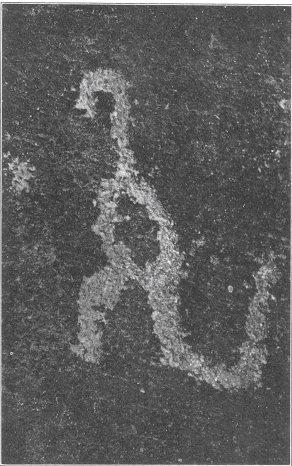
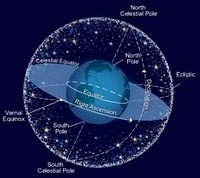
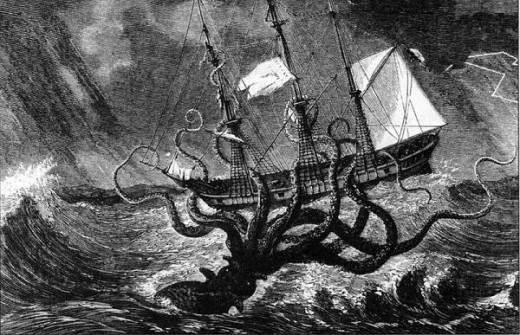
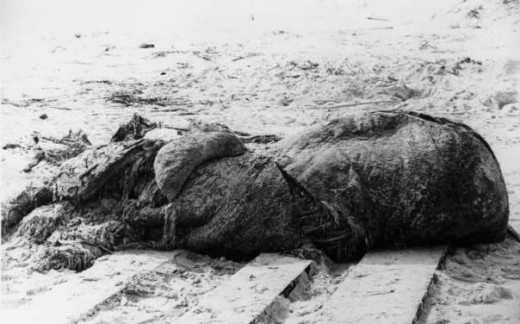
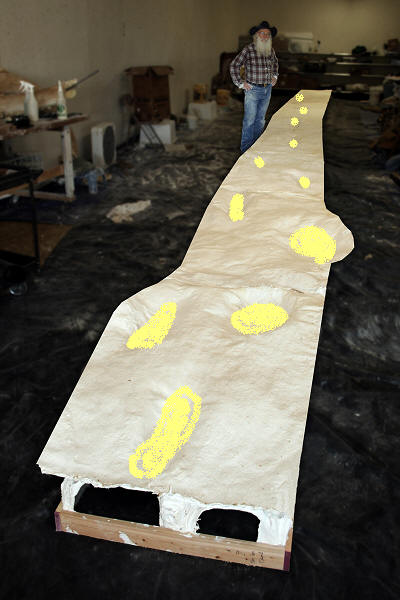
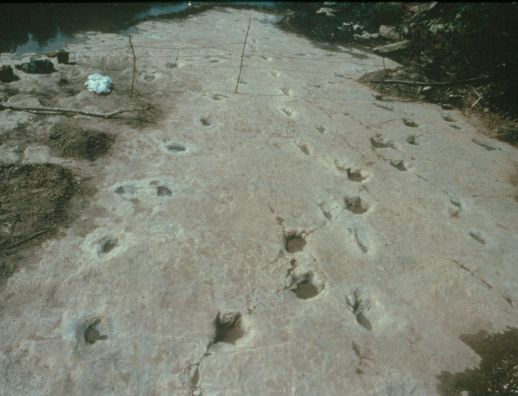
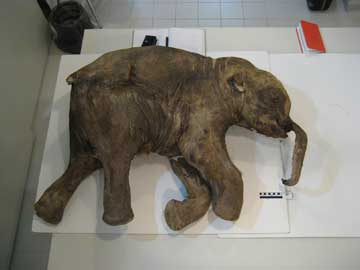
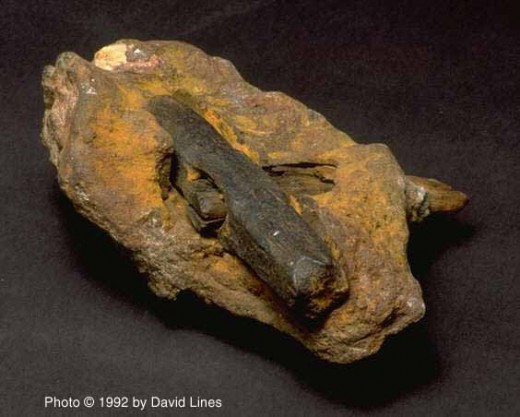
Legends of dragons are as old as mankind and are universally known. We find them mentioned throughout the Bible and other ancient literature. We find them depicted on ancient pottery, with and without humans alongside. They’re in cave paintings and cliff drawings, often shown as mounts or being hunted. The pre-Inca empire Ica stones depict every known variety of dinosaur and show men riding them or killing them. Of all the creatures known to exist today; reptiles, octopus, and squid never stop growing. Were it not for the aging effects of UV and X radiation, how large would these creatures get? Oddly enough, water blocks UV and X radiation, giving the biblical creation account some credence. According to the Bible, the original creation had "waters above" separate from "waters below" - some form of a hydrosphere perhaps. This would have made the original earth environment radiation free.
So shouldn't we see giant Octopi and Squid today?
On Christmas Eve, 1989, 12 survivors of a marine “accident” in the southern Philippines were recovered. They all said that a giant octopus as huge as an imported cow rose from below and grabbed their boats pontoons. After the boat capsized, the creature re-submerged but did not attack any of the men. Could an octopus really be large enough to drag a ship into the depths of the ocean? The remains of a giant octopus (disputed) was found on the beach in St. Augustine, Florida in 1896. It was 200 feet across and weighed 5 tons (10,000 pounds). A whale killed near Seattle, Washington had in its stomach a single Octopus arm that was 150 feet long.
But what about land animals?
Human and dinosaur fossils have been found together all over the world. The Taylor Trail (www.omniology.com) and the Dinosaur Valley State Park (along the Paluxy River in Glen Rose, Texas) show that Dinosaurs (or dragons as they’ve always been called) coexisted with man. Of course the human tracks found are generally larger than modern man’s foot (15-20 inches with a 6-foot stride, see also Valley of Giants by Dr. Cecil Dougherty). In Alaska, the frozen bones of a dinosaur were uncovered – some petrified but others lightweight and still “fresh”. Several other unfossilized dinosaur bones have been found in Alaska and Newfoundland’s Bylot Island. It is not uncommon to find (in the arctic regions) mammoths, frozen to the core – some still standing, some with food still in their mouths, and frequently with food in their stomachs. An estimated five million mammoths are believed to be frozen in arctic ice. How cold would it have to be to freeze a wooly mammoth to the core before the inner meat even begins to rot? According to frozen food scientists, it would have to be about -360 degrees Fahrenheit. The Arctic is cold, but not that cold. The evidence suggests that the polar regions were not always cold, but when they froze, it was very sudden and very, very cold. Only ice from space could produce a chill to that degree. Could this be what decimated the dragon population?
Another discovery in Texas in 1934 was a stainless-steel hammer found amongst shells dated 400 million years old. Either the methods of dating of the dinosaurs are wrong, or they were incredibly intelligent creatures skilled in metallurgy. Of course the earth was spinning three times faster then than it does now....so maybe this hammer was produced by dinosaurs living closer to the core?
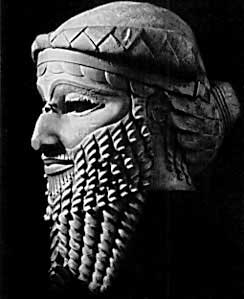
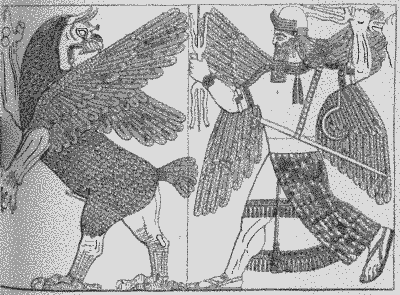

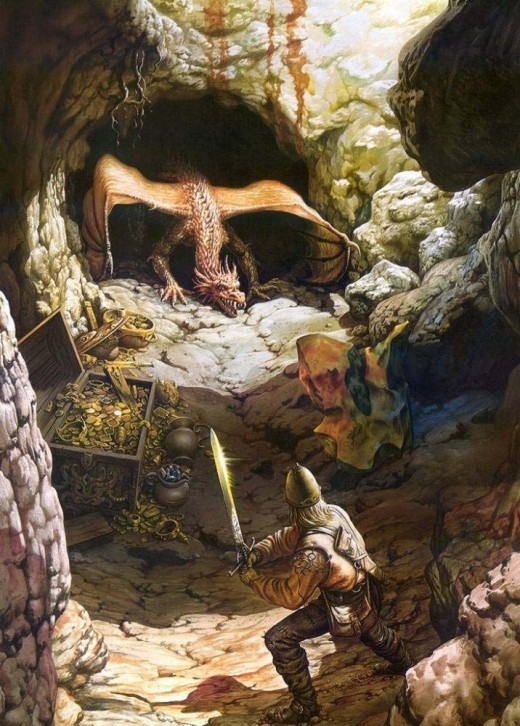

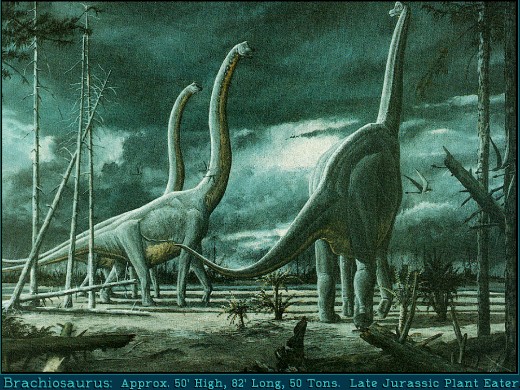
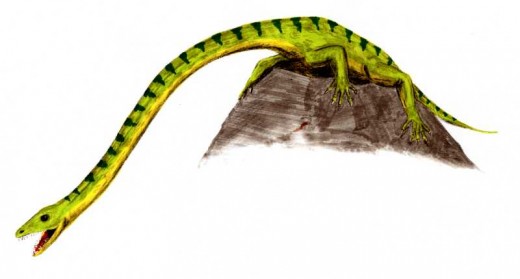
Dragons in Literature
Dragons appear in much of our ancient literature. Some ancient medicinal recipes call for dragon bones, or dragon saliva. Why put it in a recipe if the creature were merely a myth? Gilgamesh is said to have slain a dragon. Yu (who surveyed and divided China after the great flood) dug channels to drain the marshlands and drove off the dragons and snakes. The Apocrypha book of Daniel tells the story of Daniel killing the Babylonian dragon “with neither sword nor stick”. He made balls of pitch, hair, salt, and fat – then fed them to the serpent, causing it to “burst asunder.” Later, Alexander the Great wrote (326 BC) that when conquering what is now modern-day India, his men were scared by great dragons that dwelt in caves. A second-century Roman mosaic shows two dinosaurs with necks entertwined. Beowulf was a famous dragon-slayer who died fighting a winged dragon at age 88, in 583 AD. The Norwegian hero Siegfried slew the dragon Fafnir around 1000 AD. Nerluc, France is named for a local hero who slew a dragon bigger than an ox with long, sharp pointed horns on its head.
One of the more well-known manuscripts is that of Marco Polo. In 1271, Marco Polo traveled abroad in search of a cheap and high quality source of salt (he was from a merchant family). He lived in China for seventeen years. He wrote that the emperor of China raised dragons that pulled his chariot in parades. This fantastic claim is supported by a 1611 Chinese law establishing the position of “Royal Dragon Feeder”. If the emperor didn’t have dragons, this was one useless law.
In the Bible book of Job, Chapter 40, there is a description of Behemoth – the description of which seems to fit a Brachiosaurus, the largest of the dinosaurs (up to 60 feet tall and about 100 tons). Job chapter 41 is dedicated to Leviathan. By the description given, it fits a dragon but for one thing – it dwells in the deep. Nothing about Leviathan defies the possibilities. Many deep sea marine creatures exhibit luminescence. Legends of such marine monsters have existed since ancient times.
Of course we have not way to prove these texts are in any way true or accurate, nor can we prove them untrue or inaccurate. Some accounts are just straight odd. In 1572, an Italian peasant killed a dragon with a stick. Scientist Ulysses Aldrovandus obtained the dead body of the dragon and had it mounted for a museum display. It has been identified as a Tanystropheus dinosaur.
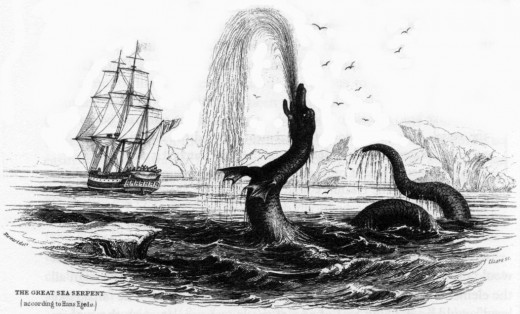
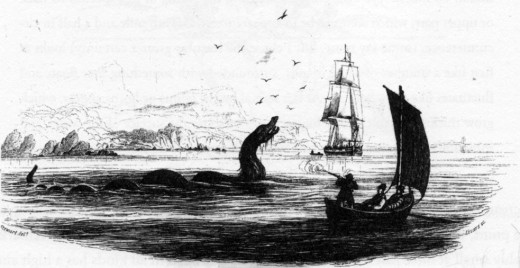
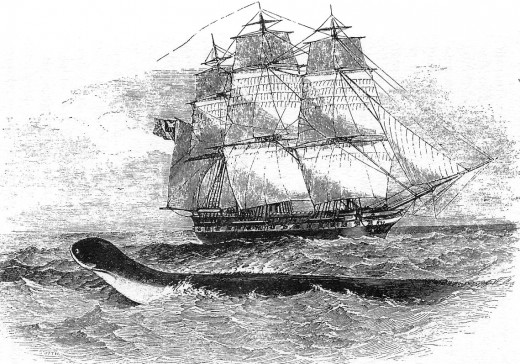
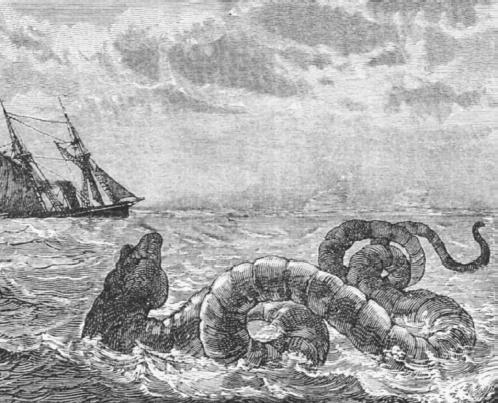


Mysteries of the Deep
The waters have more than their fare share of dragons hidden beneath. Hans Egede, Missionary to Greenland, sighted a sea monster off the coast of Greenland in 1734. Its head reached as high as the ships masthead; its body was as bulky as the ship, and three or four times as long; it had a long pointed shout and spouted like a whale; great broad paws, and the body was covered with shells; its skin very rugged and uneven. The under part of its body was shaped like a huge serpent and its tail was again as long as the ship. Another missionary to Norway in 1755, Bishop Erik Pontoppidan, sighted a sea monster as well.
Captain Peter M’Quhae and crew of the H.M.S. Daedalus reported a 60 foot sea monster in August, 1848 when the serpent swam beneath their ship. In the 1850’s, the whaling ship Monongahela out of New Bedford killed a 103 foot “sea monster” in the Pacific Ocean. It was said to have two blow-holes, four swim fins, an alligator-like head, and 94 very sharp teeth. A second ship stopped to watch them cut it up and bought their sea serpent oil, then went to port to tell the story. The Monongahela never returned.
In 1907, Arthur Henry Roston (who rescued people from the Titanic) sighted a sea serpent off the Irish cost near Cork. In another incident, a German submarine sank a British steamer in World War I (July 30, 1915) and reported that after the ship sank and exploded a giant sea serpent about 60 feet long shot out of the water. A 25 foot long creature washed up on the beach in Querqueville, Normandy, France in March, 1934. About the same time, a young plesiosaurus is reported to have been taken from a fishing net off Mudgee Beach, Australia.
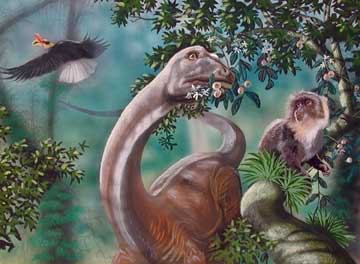
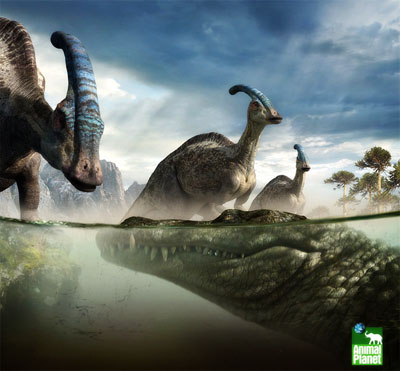
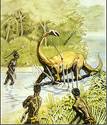
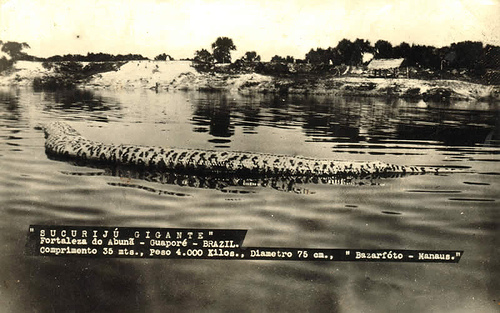
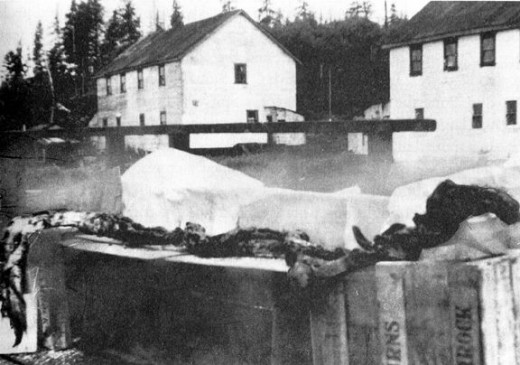
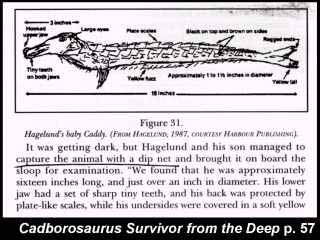
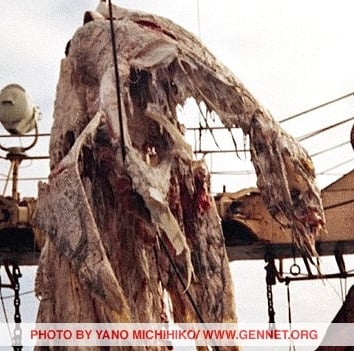
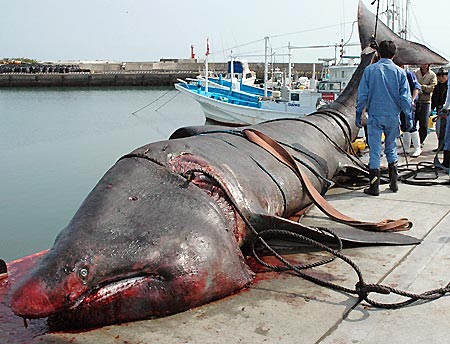
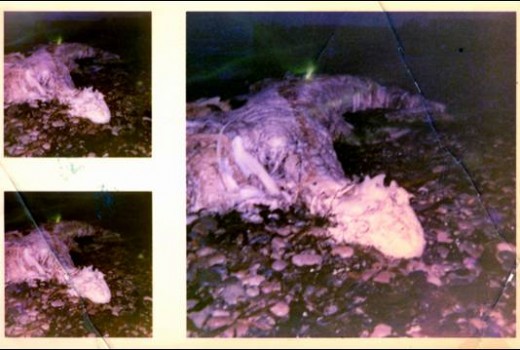
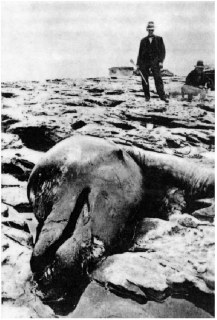
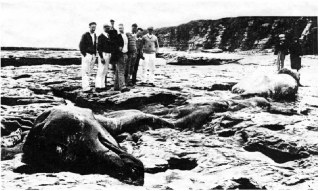
Might They Exist Today?
Africa is home to the Likouala swamp in Congo and Zaire, 55,000 square miles of swampland habitat. There have been many reports of dinosaurs still living in the swamp. Even the missionaries have been reporting them since the 1700’s. Mr. F. Gobler, a well known big game hunter, returned from an expedition to Angola and reported to the Cape Town newspaper that there was a dinosaur in the Dilolo Swamps with the head and tail of a lizard. Dr. Roy Mackal spend $250,000 on an expedition into these swamps and returned to write a book about living dinosaurs (A Living Dinosaur? In Search of Mokele-Mbembe). In his book, he also reports Mahamba, a crocodile that gets up to 50 feet long.
The Amazon jungle also has its living dinosaurs. In 1907, Lt-Colonel Percy Fawcett of the British Army was sent to mark the boundaries of Brazil and Peru. In the Beni Swamps he reported an animal which he believed to be a Diplodocus, a story confirmed by the native tribes east of the Ucayali. He also shot a 62-foot Anaconda. In 1933, a 98-foot snake weighing 2-tons was killed. A picture published in 1949 shows an Anaconda in the Amazon River estimated to be 150-feet long.
Caddy is the nickname for a creature named the Cadborosaurus. It is said to roam the Cadboro bay and has been seen frequently off the coast of British Columbia and as far south as Oregon (Cadborosaurus, Survivor from the Deep). Not only are there many sightings on record, but the remains of a 10-foot long juvenile cadborosaurus was discovered in the stomach of a sperm whale. Adults are about 22-feet long. A baby (16-inches long) was even caught in a dip-net. The man who caught it didn’t have a camera and got tired of hearing the creature scratching his bucket all night trying to get out. In the morning he drew a sketch and then threw it back into the water.
A 32-foot long 4000 pound dead creature was taken from the water near New Zealand by a Japanese fishing vessel in 1977. It has four large flippers, a fin running down its back, a long neck, and small head. Many photos were taken and a commemorative stamp was made in Japan. Its DNA was analyzed and was 96% similar to a basking shark, which means nothing since humans and apes are 98% similar in DNA but are not the same creature.
A similar creature washed up on Russia’s north coast after a storm in the arctic in October, 1994. It was 39-feet long (The Australian, October 27, 1994 and also Stars and Stripes, October, 1994).
An unidentified “devil” harassed four men in three boats off Cape Sable Island, Nova Scotia, Canada. The monster was 40-50 feet long and chased them for over a mile with its head 15-feet out of the water the entire time (not a fish). It had a wide mouth with 4-foot tusks like a walrus as well as other pointy sharp teeth about the size of a sharks. Its neck was 2-foot thick and they couldn’t tell the how is swamp so rapidly. Its eyes were 9-inch diameter on the front of the head, not the sides like a fish. It was grayish-brown with a rough texture but no scales and was covered with barnacles.
Another “Block Ness Monster” washed up on the beach on Block Island, June, 1996. It was 14 feet long but the bones were stolen before scientists could properly analyze them (although photographs where taken).
The Scituate Sea Monster washed ashore November 16, 1970 in Scituate,
Massachusetts. It was photographed then blown up by local authorities
with dynamite. It was 50-feet long and weighed an estimated 10 tons.
Many locals showed up to carve off pieces as souvenirs and many
articles were written about it.
A dead dinosaur with a neck 20
feet long washed up on Monterey beach in California in 1925 (Skin
Diver, November, 1989). The journalist who wrote the article got his
pictures from the archives at Berkley. After publishing the article, he
was asked to do another. He returned to the archives and found that
there were now NO pictures and no record that they had ever existed
whatsoever! Those who examined it said it as a type of Plesiosaurus. A
similar creature was spotted off California by 12 men on a fishing boat
in the 1930’s.
And the most disturbing of them all: In 1962 in Pensacola,
Florida, five teen went diving on the Massachusetts wreck. One of them
survived after being blown off course in a rubber raft during a storm.
He reported that they were then attacked by a sea monster with a neck
12-feet long. The head was like a sea-turtle, brownish-green and
smooth, with green eyes and oval pupils (Monster Hunt by Tim Dinsdale,
1972).
In 1969, fishermen on the City Island Bridge in the Bronx, NY spotted a creature much bigger than a whale swimming upriver. It was chased by harbor police but never captured (Mysterious America, Loren Coleman, p. 78).
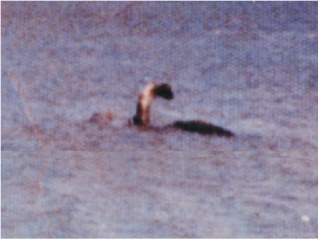
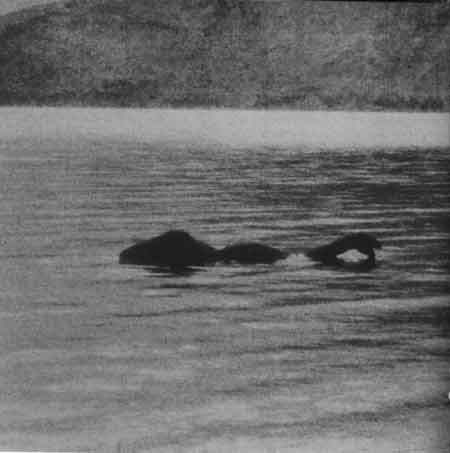
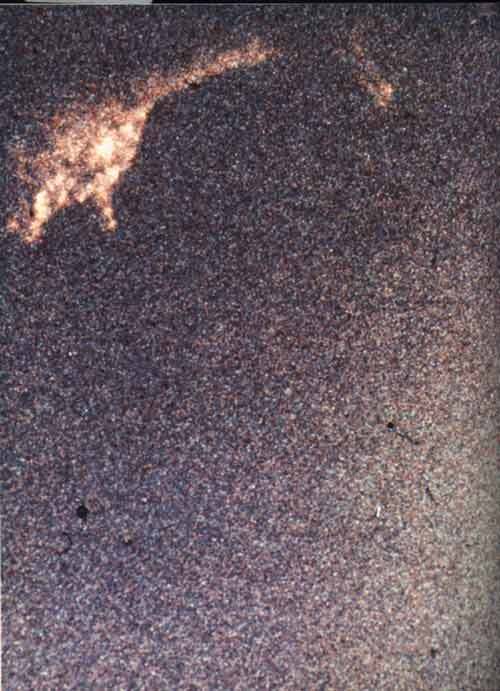
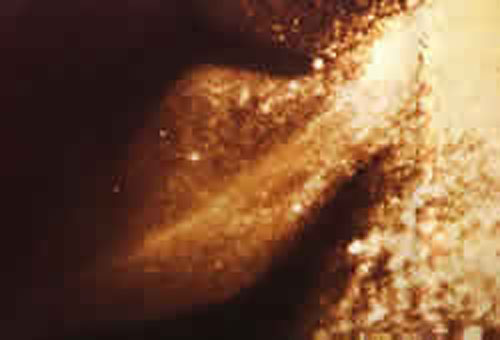
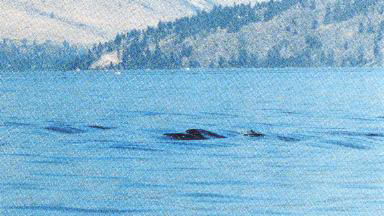
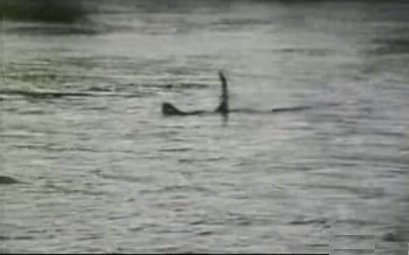
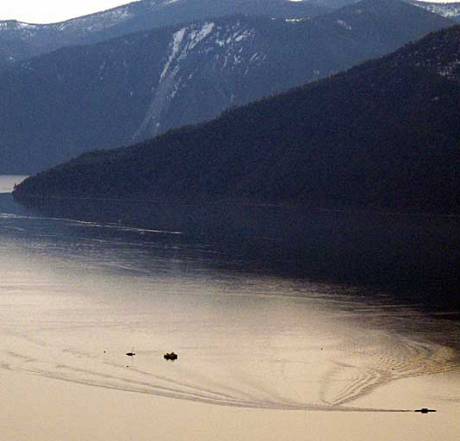
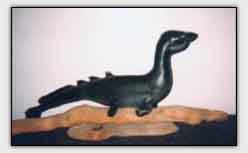
Deep Lake Sightings
Lake Champlain also has such a monster
(Champ) with hundreds of reported sightings (photo by Sandi Mansi,
1977, also Discovery, April 1998, p. 88). There are websites dedicated to this creature - both to prove it and to try to debunk it.
The most notorious of all dinosaur sightings
is the Loch Ness Monster. Over 11,000 sightings have been reported
since the highway was constructed in 1933 and several poor quality
photos taken. Scientists who are not crippled by their belief system
and have studied the phenomenon believe that it is a Plesiosaurus.
Three submarine attempts have failed to find its den, but then again
the lake is 900-feet deep and pitch black. In 1972, a giant
diamond-shaped flipper was photographed by researchers. But Loch Ness
isn’t the only lake reporting these creatures, there are seven other
lakes in Great Britain alone. There are even reports of a marine
monster in the English Channel.
It seems that many countries
have such creatures in their deep waters. Since 1973, around 100 local
Japanese have reported a monster like Loch Ness in Lake Teshidga. There
are also lakes in China where they are reported. Sweden has lake
Ostersund where 150 reports by 450 people of a Loch Ness-like creature
have been made since 1635.
Closer to home (my home anyway) is
Lake Okanagan in Canada where Ogopogo has been sighted (In Search of
Ogopog, Arlene Gaal). The lake is 80-miles long and Ogopogo has been
seen by thousands of people. It has shown up in sonar scans as 30 to
40-feet long but no good pictures have been taken of it.
Even
closer to my home is the lake Pend Oreille Paddler, said to resemble
the Loch Ness Monster. Lake Pend Oreille is longer and deeper than Loch
Ness, twice as deep in fact. It is almost 1200 feet deep, 43 miles long, and 6 miles wide at the widest point. It is also home to a top secret US Navy submarine research base.
Lake
Erie also reports a handful of “Nessy” sightings between 1985 and 1987.
One of the latest was September, 1990 (Pensacola News Journal, 9/30/90;
also Kitchner-Waterloo Record, July 19, 1993), sighted by six people on
three separate occasions. They described it as black, about 35-feet
long with a snake-like head. A local taxidermist, Pete Peterson, found
a dead creature on the shore and mounted it. He then sold it to Carl
Baugh who has it in his museum in Glen Rose, Texas although he hasn’t
displayed it because he doesn’t know what it is.
There will always be believers and skeptics when it comes to creatures that we have yet to prove conclusively. The Gorilla was once believed to be a myth, as was the Platypus. Until we recover a fresh dinosaur - or capture one, they will remain in the realm of cryptozoology. Until conclusive evidence is obtained, they will stay in the shadows with bigfoot.



